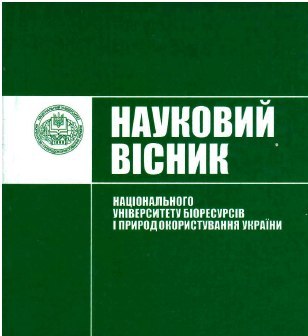Linguostylistics features for translation of media discourse texts
DOI:
https://doi.org/10.31548/philolog0(276).2017.0165%20-%20172Abstract
The article is devoted to the peculiarities of the translation of the texts of the media discourse on the example of the articles of the English-language edition The New York Times. The article deals with the lingostylistics features of the translation of English- language media texts into the Ukrainian language. The purpose of the article is to consider and analyze the lingostylistics features of the translation of the texts of the media discourse on the example of English literature and media. The material for this study was the texts of The New York Times and their translations into Ukrainian.
The research of the problem was carried out by such outstanding scientists as Barkhudarov L.S, Batsevich F.S, Rezker Y.I., Navrotsky V.V, and among the domestic scientists the works of young scientists Veronica Telichko, Golovatyuk Julia and others are known. However, their works indicate that the media discourse is rapidly evolving and changing, because its primary sources, that is, the media, are in a constant process of change.
The relevance of the topic lies in the need to study the linguistic nature of the translation of media texts, because in the modern world English is changing under the influence of other languages and through certain cultural phenomena within the country. And the speech of media occupies a huge niche in obtaining information by the consumer. According to the results of the study it can be concluded that there is a need for further study of the media discourse and the creation of new approaches to its translation. This is dictated by constant changes in the foreign language, substitution of meanings of words and features of cultural influence on language.
References
Akop"yants, N.M., Vorozhbyt, M.Y. Leksyko-stylistychni osoblyvosti perekladu anhlomovnykh tekstiv ZMI na ukrayins'ku movu. [Lexical and stylistic features of the translation of English media texts into the Ukrainian language]. – Online source: http://www.kpi.kharkov.ua/archive/Naukova_periodyka/vestnik/Aktual'ni_problemy_rozv ytku_ukrayins'koho_suspil'stva/2016/13/LEKSYKO- STYLISTYChNI_OSOBLYVOSTI_PEREKLADU.pdf
Barkhudarov, L. S. (1975). Yazyk y perevod (Voprosy obshchey y chastnoy teoryy perevoda) [Language and Translation (Questions of General and Particular Translation Theory)] – M. : Mezhdu- nar. otnoshenyya, 240.
Batsevych, F. S. (2004). Osnovy komunikatyvnoi linhvistyky : pidruchnyk [Basics of communicative linguistics: textbook]. – K. : Akademiya, 344.
Dobrosklonskaya, T.H. (2005). Voprosy yzuchenyya medyatekstov. Opyt yssledovanyya sovremennoy anhlyyskoy medyarechy [Questions of the study of mediatexts. Experience of the study of modern English media language]. – M.: URSS Edytoryal, 288.
Karaban, V.I. (2001). Pereklad anhliys'koi naukovoi ta tekhnichnoi literatury. Chastyna 2. Leksychni, terminolohichni ta zhanrovo–stylistychni trudnoshchi [Translation of English scientific and technical literature. Part 2. Lexical, terminological and genre-stylistic difficulties].– Vinnytsya: Nova knyha, 304.
Yspravnykova, A.S. Perevod paremyolohycheskykh transformatsyy v medyadyskurse. [Translation of pariologic transformations in the mediadiscourse]. – Online source: http://vkr.pspu.ru/uploads/2513/Ispravnikova_vkr.pdf
Miram, H.E,. Hon O.M. (2003). Profesiynyy pereklad: Navchal'nyy posibnyk [Professional translation: Textbook].− K. : El'ha, Nika−Tsentr, 136.
Navrots'kyy, V. V. (2001). Lohichni teoriï dialohu i dyskursu: kohnityvnyy pidkhid [Logical theories of dialogue and discourse: a cognitive approach]. –K.: Filosofs'ka dumka, 123.
Ostroushko, O. A. (2010). Leksychni transformatsiï pry perekladi anhliys'kykh informatsiynykh tekstiv ukrains'koyu movoyu [Lexical transformations in the translation of English information texts in Ukrainian]. – K. :Filolohichni studiï, 208.
Retsker, Ya. Y. (2004). Teoryya perevoda y perevodcheskaya praktyka. Ocherky lynhvystycheskoy teoryy perevoda [Translation theory and translation practice. Essays on the linguistic theory of translation] – M. : R. Valent, 244.
Shynkaruk, V.D. (2005) Osoblyvosti dyskursyvnykh vyslovlen u latynskii movi [Features of Discourse Speeches in Latin]. Proceedings of National University “Ostrozka akademia”. Seriia filolohichna. Ostroh, P.88-93.
Financial Times. – London : published by The Financial Times Limited, Tuesday 19 May 2015, 30.
The Guardian Weekly. – Manchester : published by Guardian News & Media Ltd, 18−24 January 2013. – Vol. 188, No. 6., 48.
The New York Times. − New York : Tuesday, August 14, 2012. − Vol. CLXI, No. 55,863, 50.
The New York Times. − New York : Tuesday, Au- gust 21, 2012. − Vol.CLXI, No. 55,870, 50.
Downloads
Published
Issue
Section
License
Relationship between right holders and users shall be governed by the terms of the license Creative Commons Attribution – non-commercial – Distribution On Same Conditions 4.0 international (CC BY-NC-SA 4.0):https://creativecommons.org/licenses/by-nc-sa/4.0/deed.uk
Authors who publish with this journal agree to the following terms:
- Authors retain copyright and grant the journal right of first publication with the work simultaneously licensed under a Creative Commons Attribution License that allows others to share the work with an acknowledgement of the work's authorship and initial publication in this journal.
- Authors are able to enter into separate, additional contractual arrangements for the non-exclusive distribution of the journal's published version of the work (e.g., post it to an institutional repository or publish it in a book), with an acknowledgement of its initial publication in this journal.
- Authors are permitted and encouraged to post their work online (e.g., in institutional repositories or on their website) prior to and during the submission process, as it can lead to productive exchanges, as well as earlier and greater citation of published work (See The Effect of Open Access).

